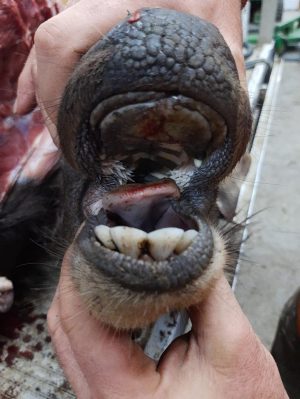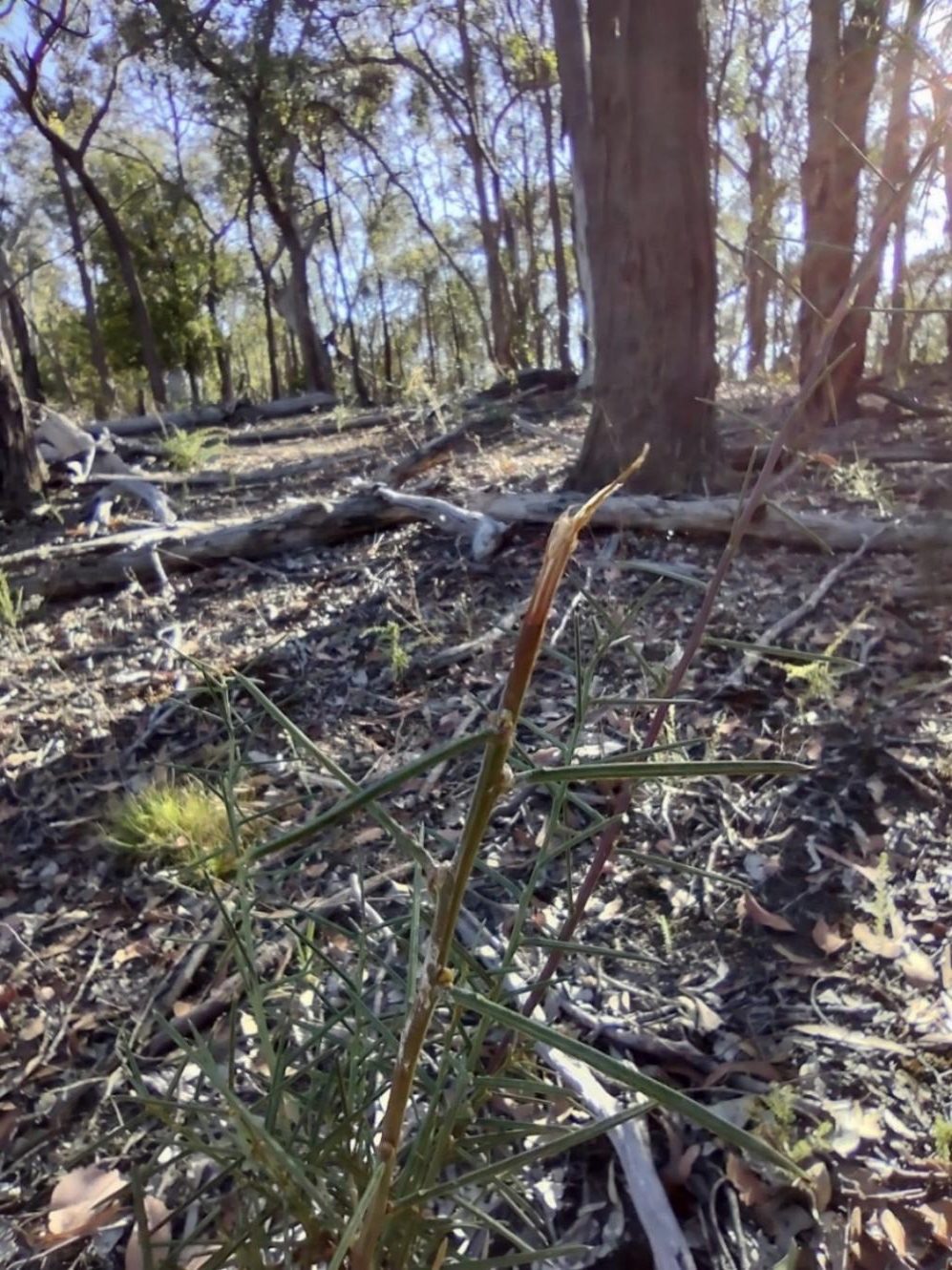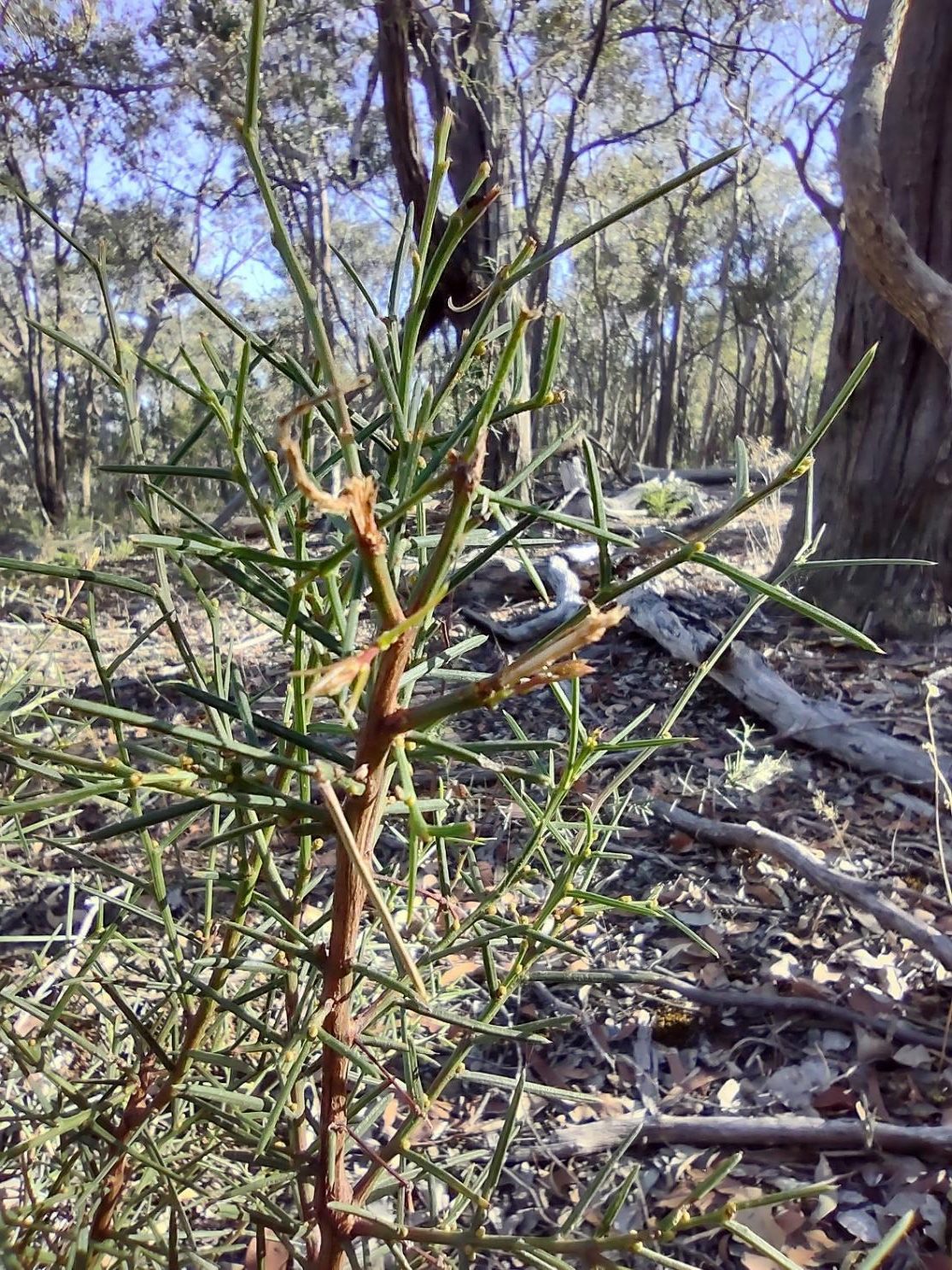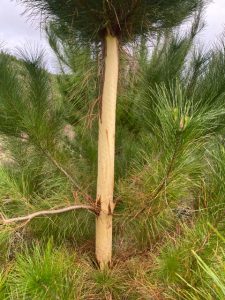Deer Impacts
Table of Contents
Damage caused by deer and evidence of deer
Deer are damaging and destroying some our most fragile and unique natural assets in National and State Parks throughout the north east. Of particular concern is the impact they are having on Australia’s iconic Alpine Sphagnum Bogs and Associated Fens which are listed as endangered under the Environmental Protection and Biodiversity Conservation Act 1999 and listed as the threatened Alpine Bog Community under the Victorian Flora and Fauna Guarantee Act 1988 (Image 15).
Deer are potentially impacting Aboriginal cultural heritage sites and becoming an increasing problem in peri-urban settings.
Deer are impacting grazing land, orchards, vineyards, dairy farms, pine plantations, pastures and market gardens (ISC 2023) and particularly when in large numbers, can severely impact agricultural land and productivity, and native bush through a range of activities including:
- Selective overgrazing of native plants. While deer are generalists that browse a wide range of plants, they also selectively over browse (often to the ground) preferred species, seedlings and saplings when they can find them (Image 1);
- Deer have lower teeth which close on a hard upper gum plate with no upper teeth (Image 3). When they browse woody shrubs they leave a tag as they tear rather than bite vegetation. Evidence of deer browsing includes ragged torn stems and branches and browse lines on woody shrubs (Images 4 to 7);
- Causing overgrowth of some native species. Deer do find some plants such as Burgan Kunzea leptospermoides unpalatable which can lead to unchecked growth of Burgan which provides harbour for deer (Image 2);
- Over grazing of a range of pasture grasses and native forbs and grasses;
- Tree bark stripping, stem breakage and shrub damage and destruction of foliage from antler rubbing to remove velvet and to scent/mark trees (Image 8 to 10);
- Vegetation destruction and clearing through stags fighting, thrashing vegetation, clearing vegetation and pawing and repeated urination in soil around selected trees (preaching trees). Deer stand on their hind legs and rub scent as high up as possible on preaching trees from glands on their head to attract females and ward off other males during the breeding season (referred to as the rut) (Image 11);
- Vegetation destruction in bedding sites where leaves and litter are flattened and vegetation crushed;
- Soil disturbance caused by:
- Pugging (when wet soil is churned up and pushed down by hard hooves of heavy animals) particularly around and along the banks of creeks/streams, drainage lines, lakes and dams, preaching trees and rutting areas (Image 12 and 13). This results in vegetation destruction, soil compaction and in turn reduction in soil structure affecting plant root, water and air penetration. This can cause increased risk of erosion and opportunities for weed invasion. It can also reduce water quality due to dislodged sediments entering the water;
- Creation of wallows (a depression containing mud, deer urine and often water created by deer rolling and trampling) used by Sambar and Red deer in Victoria, during the rut, results in soil disturbance, vegetation destruction, water fouling (from urine and faeces) pugging and unstable soil prone to soil erosion (Image 12, 14 and 15); and
- Creation of tracks resulting in vegetation destruction and removal, soil compaction, and pugging (Image 14 and 16).
- Erosion and downstream sedimentation from wallowing, pugging and vegetation destruction;
- Potential spread of weed seeds (e.g. English Broom) and propagules on land and in waterways, carried on fur, hooves and in droppings which may also invade bare ground created by deer;
- Increased nutrient load and potential spread of pathogens from urine and faeces deposited on land and in waterways causing fouling of waterways and impacting water quality. Pathogens in deer faeces can contaminate and affect water supplies (HWS 2023).
- May provide vectors for the spread of livestock diseases such as Foot and Mouth Disease posing a biosecurity risk for agriculture. The Australian Government Department of Agriculture, Water and the Environment (now the Department of Agriculture, Fisheries and Forestry) is funding a study titled ‘The role of wild deer in the transmission of diseases in livestock’ by the Centre For Invasive Species Solutions (2023), for updates go to: Transmission of diseases by deer; and
- Deer are increasingly becoming roadway hazards in both regional and peri-urban areas (Image 17 a-e). See the Invasive Species Council Website for videos of deer on roads.

Image 1. Excessive browsing of Prickly Currant-bush by deer (Image source: Abzeco Pty Ltd)

Image 2. Dense stand of young Burgan that is unbrowsed while surrounding vegetation is heavily browsed by deer (Image source: Abzeco Pty Ltd)

Image 3. Mouth of a Sambar deer displaying the lower teeth and the upper plate with no teeth (Image source: Abzeco Pty Ltd)

Image 4. The appearance of woody vegetation browsed by deer showing the torn ragged edge that results from deer biting lower teeth against a hard plate to grip and tear vegetation off (Image source: Abzeco Pty Ltd)

Image 5. Close image of vegetation browsed by deer evidenced by ragged cut with tag of woody vegetation (Image source: Abzeco Pty Ltd)

Image 6. Woody vegetation with multiple browsed branches showing the torn ragged edge indicative of deer browsing (Image source: Abzeco Pty Ltd)

Image 7. Browse line evident on Sweet Pittosporum (Image source: Abzeco Pty Ltd)

Image 8. Rub tree showing bark stripping from antler rubbing (Image source: Hancock Victorian Plantations Holdings, supplied by Upper Ovens Valley Landcare Group)

Image 9. Rub tree showing bark stripping from antler rubbing over an extended area of the trunk (Image source: Abzeco Pty Ltd)

Image 10. Rub trees and thrashed trampled vegetation (hunting hound in foreground) (Image source: Abzeco Pty Ltd)

Image 11. Area cleared of streamside vegetation (including tree ferns) by antler thrashing, trampling and fighting and wallowing (wallows in the back ground) near a creek (Image source: Abzeco Pty Ltd)

Image 12. Deer wallows, deer prints and pugging (Image source: Abzeco Pty Ltd)

Image 13. Heavy pugging along the edge of a dam (Image source: Abzeco Pty Ltd)

Image 14. Pugging, tracks, destruction of vegetation and wallow (Image source: Abzeco Pty Ltd)

Image 15. A deer wallows in the Australian alps. Deer are destroying Alpine Sphagnum bogs and Associated Fens which are listed as endangered under the Environmental Protection and Biodiversity Conservation Act 1999 and listed as the threatened Alpine Bog Community under the Victorian Flora and Fauna Guarantee Act 1988 (Image source: Parks Victoria, supplied by Upper Ovens Valley Landcare Group)

Image 16. Game trail showing soil compaction, vegetation damage through a dense stand of vegetation (Image source: Abzeco Pty Ltd)

Image 17a-e. (a-b) Car damage caused by collision with fallow deer (Images source: Abzeco Pty Ltd). (c) dead Sambar deer on the eastern freeway near Bourke Road exit, inner suburban Melbourne, killed by a vehicle collision (Image source: Abzeco Pty Ltd). (d-e) cars damaged due to collisions with deer (Images source: supplied by Upper Ovens Valley Landcare Group)
Economic costs for landowners
There are few if any studies that detail the economic costs of deer impacts on agriculture until recently when the Invasive Species Council commissioned Frontier Economics to produce a report on the economic, social and environmental cost of feral deer in Victoria titled: ‘Counting the doe: an analysis of the economic, social & environmental cost of feral deer in Victoria’ (FE 2022) which was released in June 2022 and is available at: Counting-the-doe-the-economic-impacts-of-feral-deer-in-Victoria. This report is an excellent resource as it provides the latest detailed breakdown of economic, social and environmental costs of feral deer in Victoria. The key points of the report include:
Without adequate control, it is estimated that deer will number between 1.7 to 4.6 million deer by 2050.
Estimated costs to the broader community from unchecked feral deer over the next 30 years:
- $245 m to $350 m in economic costs from lost gross margin due to grazing (assuming 10% of feral deer are grazing thereby reducing stocking capacity and therefor farm income).
- $106 m to $144 m in economic costs from resources spent managing feral deer (based on the assumption a farmer spends 20 days a year managing deer on their properties).
- $269 m to $365 m in economic costs from lost forestry production (assumed loss from feral deer grazing and trampling).
- $576 m to $825 m in economic costs from deer-related vehicle accidents (assumes all future feral deer related crashes on highways within Victoria can be avoided).
- $308 m to $474 m in social costs from reduced recreation, amenity and use values due to environmental degradation and deer-related accidents and safety concerns (assumes that Victorian national and state parks recreational use will be impacted by 1% due to feral deer).
The above estimates amount to billions of dollars and do not include additional costs such as:
- Other costs of management (e.g. cost of materials and equipment such as fencing).
- The cost of water supply due to the need for increased water quality treatment (deer carry the parasite Cryptosporidium sporidium and they are in greater abundance in water supply catchments than other host species).
- The risk of the spread of disease to humans, livestock and other animals.
- Negative impacts on indigenous cultural heritage through environmental damage.
- Negative impacts on biodiversity and restoration works.
- Negative effects on river and waterway health.
Therefore it is likely that the true economic, social, cultural and environmental costs imposed on the community as a result of feral deer in Victoria will be larger than the current estimates.
The analysis suggests that the cost of eradication all feral deer in 2022 could be $338 m to $581 m which is around a quarter of the cost of the potential benefits. The sooner action is undertaken to control deer, the lower the cost will be (deer numbers will continually increase requiring greater resources if control is delayed) and the sooner farmers will benefit.
On ground agricultural impacts of deer include repeated damage to farm infrastructure such as fencing (Image 18), harassment of stock, erosion of tracks under fences, extensive browsing of crops (Image 18) and pasture in competition with stock has been noted (Claridge 2016). One winery in Panton Hill, Victoria lost an entire Chardonnay crop in one night just after fruit set and heritage apple trees were damaged (FE 2022). Pasture may be destroyed through the creation of wallows turning grassed areas into mud.



Image 18. Deer cause damage to farm fencing and extensive damage to crops
(Image source: North east Media, National Feral Deer Action Plan, supplied by Upper Ovens Valley Landcare Group)
Deer also damage revegetation areas (through browsing, rubbing, thrashing and trampling), particularly on the edges of farmland abutting large conservation reserves (Claridge 2016). The loss of planted forestry seedlings has also been recorded due to heavy browsing, reduced growth and death of saplings caused by rubbing and thrashing (Claridge 2016).
Deer browsing pressure and competition with stock can be significant (Claridge 2016). A red deer is thought to need three to four times the amount of food required by a sheep or a third of that of breeding cow and a fully grown sambar deer is larger than a red deer so likely to require more (Claridge 2016). Fallow deer are estimated to eat 1.8-2.3 dry sheep equivalent (DSE), red deer 2.8-3.6 DSE and sambar deer 5 DSE (FE 2022). Deer have also been reported to disturb domestic sheep during lambing (Davis et al. 2016).
Economic costs of deer control for landowners may include fencing installation and fencing maintenance, purchasing deterrents such as bird scaring cannons, purchasing thermal, infrared or spotlight equipment for shooting, possibly purchasing and training hunting hounds, and possibly hiring professional shooters if other shooting options are not available. There are also costs for the replacement of lost crops, replacement of lost plantation stock, replacement of ornamental gardens, vehicle collision repairs and possible hospital bills if injured.
Environmental impacts
Deer have invaded a wide range of habitats ranging from alpine areas to rainforests to coastal areas and waterways throughout all these habitats (DELWP 2020, ISC 2023). They are adapted to a wide range of vegetation types including dense forests, open scrubland, grazing land and timber plantations in Victoria (DELWP 2020).
Presently there is a lack of evidence based research on deer impacts on native vegetation in Victoria and Australia (DELWP 2020, Davis et al. 2016) and effective control and monitoring methods (Davis et al. 2016, DELWP 2020). However, it is estimated that deer are impacting over 1000 native flora and fauna species and at least 12 ecological communities including some threatened species and threatened communities (DELWP 2020). The impacts of Sambar deer are recognised under the Flora and Fauna Guarantee Act 1988 which lists the Reduction in biodiversity on native vegetation by Sambar (Cervus unicolor) as a threatening process (DEECA 2023).
Deer may reduce biodiversity by reducing the number, cover, abundance and diversity of native plants including young canopy trees. This can lead to structural changes to vegetation through the reduction of canopy and understory cover (Davis et al. 2016, DELWP 2020, ISC 2023, Bennett et al. 2021). Deer may cause soil disturbance, erosion, impact water quality in river systems and spread weeds. This can simplify the composition and structure of vegetation (Bennett et al. 2021, DELWP 2020, ISC 2023, Davis et al. 2016) leading to destruction and reduction in native animal and plant habitat (Bennett 2021, DELWP 2020, ISC 2023, Davis et al. 2016) and the loss of threatened plant species and whole communities such as nationally threatened alpine bogs (Image 15). Further detailed information and videos of deer damage can be found on the Invasive Species Council Website at: Feral deer impacts and a range of resources included in the Information resources section.
Deer impacts and management overseas (New Zealand)
In New Zealand there is evidence that high numbers of deer cause significant environmental damage in sensitive habitats (Davis et al. 2016). With many studies demonstrating the negative impacts of deer, particularly on plants. In response, a combination of control, commercial harvesting and hunting have been used to successfully reduce deer numbers by 75%-90% from the peak levels in the 1990s (Davis et al. 2016).